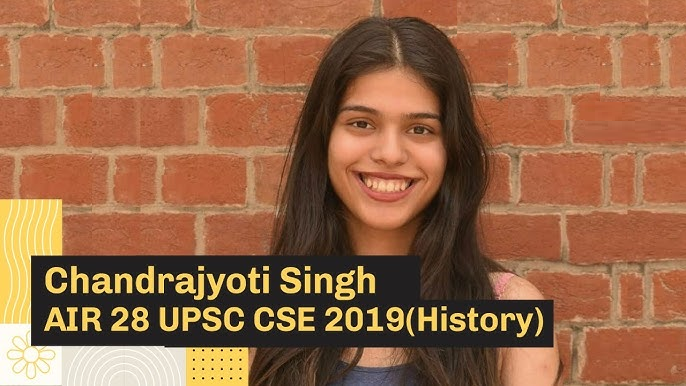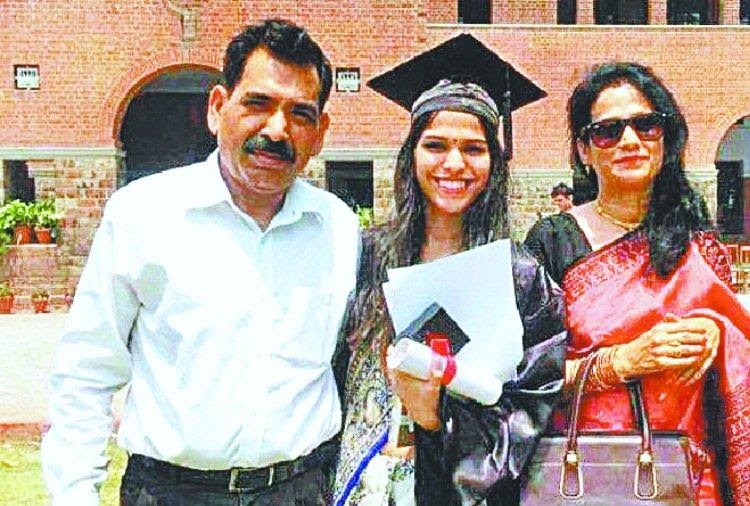(HOT) UPSC Current Affairs 2025 PDF
NEW! The Gist (NOV-2025) | E-BOOKS
(Success Story) Topper's Strategy for History Optional – AIR 28 Chandrajyoti Singh Shares Her Winning Plan
(Success Story) Topper's Strategy for History Optional – AIR 28 Chandrajyoti Singh Shares Her Winning Plan
Chandrajyoti Singh cleared the UPSC Civil Services examination in 2019, at her very first attempt, with a wholesome all India rank of 28. As both her parents served in the Indian army, the will to serve the nation was ingrained in her from a very early age. With her parents holding transferable jobs, she moved from one part of the country to another, finally finding herself pursuing her graduation in History from St. Stephen’s College in Delhi. After completing her graduation in 2018, Chandrajyoti took a gap year to fully concentrate on her UPSC preparation and appeared for the Civil Services Examination for the very first time in 2019, successfully passing it with flying colors.

Chandrajyoti Singh, AIR 28, 2019
Strategy for History Optional
After her graduation in June 2018, she immediately moved to Delhi’s Rajendra Nagar, to further her preparation. Being a student of History, she naturally found herself taking up History as her optional subject for UPSC Civil Services Mains as well. She took the first 4 months, i.e. June, July, August, and September, of her preparation to complete her optional at one go. She started with Ancient History in June, slowly proceeding topic-wise, till she was done with the complete syllabus by the end of September.
Once she had completed one iteration through the curriculum, she started writing answers and taking mock tests to test how well she could perform in a real-time examination. It was around this time that she took up map practice specific to History, marking all sites on different locations on the map, taking one portion each time. This eventually helped her make notes with maps marked that she could use to quickly revise just before the written examination. This also helped enrich her answer writing tactics.
Keep It Simple and Keep Revising
Chandrajyoti kept her sources limited and made short, crisp notes from them. This helped her quickly revise before the exams, as well as keep revising until the material was lodged in her mind so well that she could recall it at the drop of a hat.

Chandrajyoti with her parents.
Study Sources :
Chandrajyoti followed the following sources for each section:
-
Ancient India – India’s Ancient Past by R.S. Sharma, Ancient India by Upinder Singh
-
Medieval India – History of Medieval India by Satish Chandra
-
Modern India – History of Modern India by Bipin Chandra, From Plassey to Partition by Sekhar Bandopadhyay
-
World History – A History of the Modern World by Jain and Mathur, Mastering Modern World History by Norman Lowe.
Chandrajyoti also says she used the internet to her full advantage. If any topic in the syllabus was not adequately presented in these sources or was difficult to understand for her, she would simply use the topic name and add “UPSC” next to it and try a Google search. More often than not, that would give her enough sources to work with.
She has also used supplementary sources as follows:
-
IGNOU History Notes – These helped her fill in any gaps that may have been left in the notes she had prepared on her own.
-
Her own graduation notes as they added to the minimal sources, she had kept for UPSC.
-
Maps from Self-Study History – Helped her create crisp content that she could incorporate in her answers to the right informational answers in fewer words and less time.
Mock Tests :
Chandrajyoti took lot of mock tests for practice. These helped her gauge how well her preparation was and how appropriately she was presenting her answers. The feedback from test series helped her improve her answers. She insists that aspirants should focus on answer writing. The content may remain the same for almost every aspirant; however, it is how well that content is presented that gives one an edge over the competition. Enrolling in at least one test series with evaluation is the key to getting good marks in the mains examination.
Tricks and Tips :
History puts a lot of weight on Historiography i.e. the practice of citing scholars who made those statements. For example, if you are writing an answer on the decline of the Harappan Civilization, and you mention that Historians have made a certain assumption, mentioning the name of the Historian instead of just mentioning their hypothesis will give you an edge over other aspirants.
Message to Aspirants :
Chandrajyoti says her strategy served her well, however, it may not be as suited to another aspirant. Pick and choose what works for you and discard that doesn’t. There is no one path. As long as you are sincere, and work hard on not only studying information but also on answer writing, you should sail through.
© IASEXAMPORTAL
CLICK HERE TO DOWNLOAD UPSC TOPPERS NOTES


